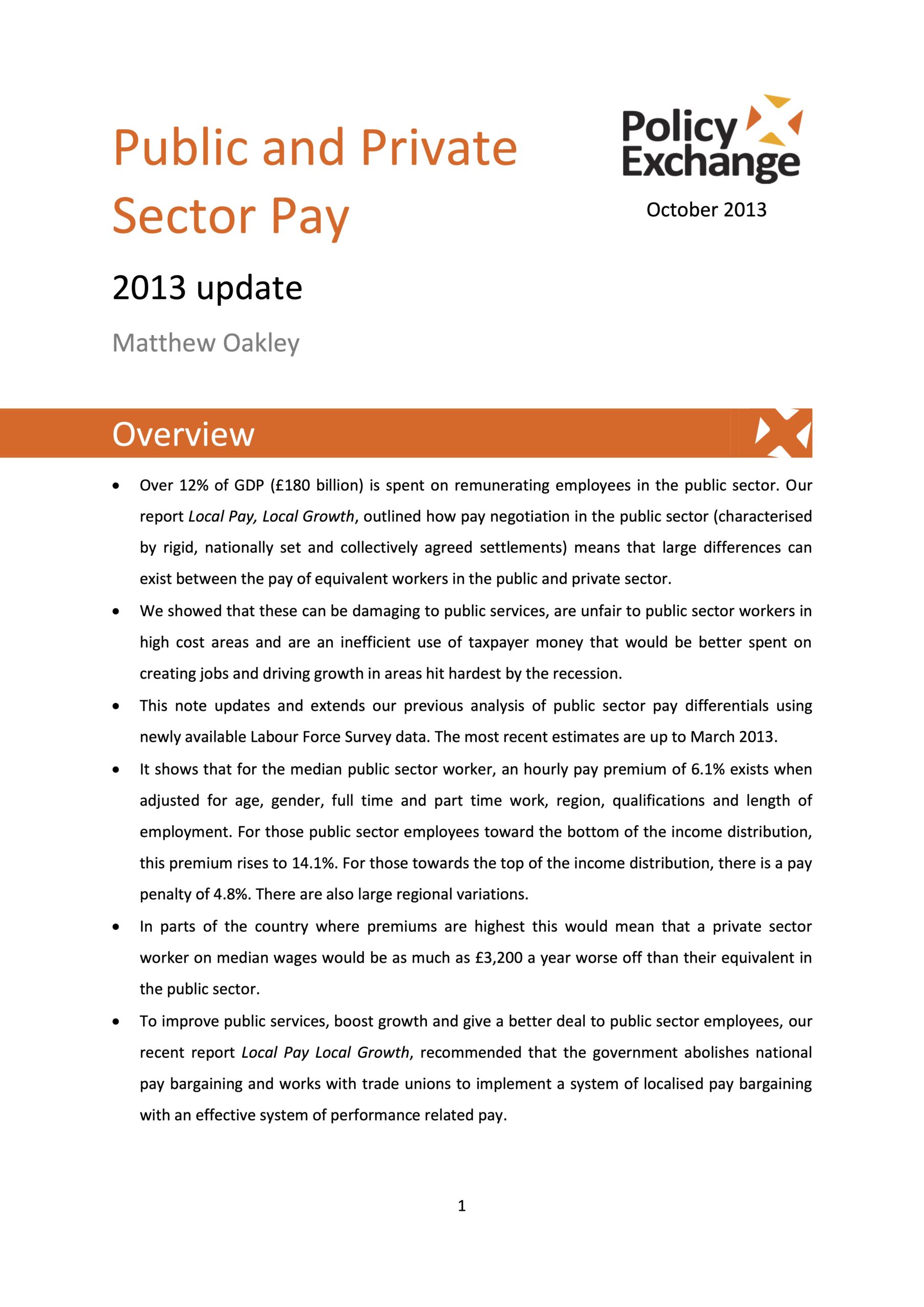
Public and Private Sector Pay: 2013 update
Public sector workers in the North East, Merseyside and South West of England earn as much as £3,200 more than their equivalents in the private sector.
Analysis of the most recent Labour Force Survey data (January-March 2013) reveals that there is still a significant gap between public sector and private sector pay, the amount varying dramatically from region to region.
The paper found that:
- The average public sector worker benefits from a 6.1% pay ‘premium’, meaning that they can earn as much as £1,400 a year more than someone in the private sector, taking into account age, gender, full time and part time work, region, qualifications and length of employment. This represents almost a 20% and 8% rise respectively in the premium compared to the same quarters of 2007 and 2010.
- The average premium has been relatively steady since mid 2010 suggesting that the Coalition’s decision to freeze public sector pay rises is starting to re-alter the balance.
- In the North East, Merseyside and South West the public sector ‘premium’ is as high as 14% or over £3,000 a year.
- In central London, the East and South East, the average public sector worker gets paid less than their private sector equivalent.
The report argues that the variation in pay has arisen because of the system of national pay bargaining, which means that workers are paid the same amount regardless of where they live. The paper recommends abolishing national pay deals and moving to a system which can reflect local labour markets and reward performance. It also urges the government to push ahead with its plans to remove automatic pay uplifts across the public sector.
A previous Policy Exchange paper (Local Pay, Local Growth) said that rebalancing the pay and pensions of public sector workers so that they are in line with that of equivalent workers in the private sector would save £6.3 billion a year in public spending. This money could be better spent on tackling local unemployment and could create at least 288,000 private sector jobs – or the equivalent salaries of 332,000 more nurses or 252,000 more teachers – in some of the areas of the poorest parts of the country.

